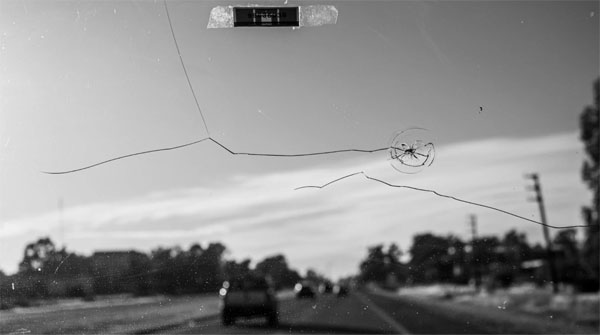Cracked Windshields, Cracked Safety: Why Thousands of Ontario Drivers Are Delaying Repairs—And Paying the Price
By Space Coast Daily // May 28, 2025

An estimated 6% of the 19 million vehicles on Canadian roads have damaged windshields at any given time—that’s over a million cars driving with compromised visibility and safety. In Ontario, where highways stretch across unpredictable terrain and weather can shift in minutes, a cracked windshield is far more than a cosmetic flaw. It can weaken your car’s structure, interfere with airbags, and even lead to fines or failed safety inspections.
So why are so many drivers still ignoring the signs? This blog breaks down the real dangers of driving with a cracked windshield, the legal risks you might not be aware of, and the smartest way to protect yourself before things get worse.
Your Windshield Is a Structural Safety Feature
The windshield is a load-bearing part of your vehicle’s safety system. In realistic crash tests, vehicles with intact windshields showed significantly greater roof resistance compared to those with compromised glass. When the windshield is cracked, that support weakens, leaving the vehicle more vulnerable to collapse and reducing overall crash protection.
Beyond structure, the windshield also supports airbag function. Many front airbags rely on the windshield to deploy correctly. If the glass gives way too soon, airbags may misfire or deploy in the wrong direction. That leaves you less protected in an accident.
This is why the windshield’s structural role in vehicle safety cannot be overstated. It directly impacts how your vehicle protects you in an emergency.
The Dangers of Driving with a Cracked Windshield
Even a small crack can cause major problems. Ontario’s climate, with its fluctuating temperatures and icy roads, makes cracks spread faster than in many other provinces. Winter air contracts the glass. Road salt and moisture seep into cracks. Then, when the temperature rises, that expansion puts pressure on the weakened areas, turning hairline flaws into large, hazardous splits.
Here are some common dangers of driving with a cracked windshield:
- Reduced visibility due to distortion or glare
- Weakened structural support during a crash
- Improper airbag deployment
- Moisture and dirt compromising sensor function
- Potential for the glass to shatter in extreme conditions
Even with an intact windshield, certain driving situations demand extra caution, especially when sharing the road with transport trucks or other large vehicles. Cracks only make those situations more dangerous. Practicing safe driving habits around big rigs can help reduce risk, but full visibility and structural integrity are still essential for crash prevention.
Is It Illegal to Drive with a Cracked Windshield in Ontario?
Yes—depending on the size, location, and severity of the crack, it can be.
Under Section 74(1) of Ontario’s Highway Traffic Act, drivers are required to maintain a clear, unobstructed view through the windshield and front side windows. If a crack distorts your vision or crosses into the area swept by your wipers, you’re likely breaking the law.
An officer can issue a ticket on the spot. Most fines start around $85, but the true cost comes if your vehicle is deemed unsafe and needs to be pulled off the road or sent for inspection. In serious cases, especially where the crack affects multiple safety systems, your insurance provider may even raise concerns about the roadworthiness of your vehicle.
Why Windshield Strength Matters in a Crash
Accidents rarely give warnings. A sudden swerve, a rear-end hit, or a rollover can test every part of your vehicle’s safety system. And if your windshield is already compromised, that system could fail.
Here’s why windshield strength matters in a crash:
- It reinforces the roof and resists collapse during rollovers
- It gives airbags the resistance they need for correct deployment
- It keeps passengers from being ejected through the front
- It prevents flying debris from entering the cabin
Your windshield is more than glass. It’s a shield, a brace, and a backstop all in one. Once it’s cracked, none of those roles are guaranteed.
Insurance and Repair Options in Ontario
The good news? Most Ontario auto insurance policies cover windshield repair. Some even waive the deductible for chip repair, especially if you catch the issue early. It’s always worth checking with your provider.
Timely repair comes with these benefits:
- Prevents full windshield failure
- Costs less than a replacement
- Maintains your vehicle’s safety rating
- Keeps your insurance premiums stable
- Avoids tickets or inspection orders
- Restores optimal visibility and sensor accuracy
Booking comprehensive auto glass repair services when damage first appears is always a smart move. Quick action can prevent more expensive repairs down the line, keep your vehicle compliant with Ontario safety laws, and maintain optimal performance for sensors used in ADAS (Advanced Driver Assistance Systems).
Many providers offer mobile service, meaning repairs can be done at your home or workplace, saving you time and hassle. In some cases, insurance will even cover the full cost with no deductible. This makes early repair a practical and affordable choice.
Small Cracks Can Lead to Big Consequences
In many cases, a crack begins as a tiny chip caused by gravel or road debris. If repaired early, this kind of damage is usually simple and inexpensive to fix. But wait too long, and you’re looking at a full replacement. That could mean higher costs, longer wait times, and potential insurance claims.
Ontario weather only speeds up the process. Freeze-thaw cycles, potholes, and road vibration all work against a damaged windshield. Even safe driving habits can’t protect you if the crack suddenly spreads while you’re on the highway or navigating busy intersections.
This is exactly how small cracks can turn into serious hazards—quietly, quickly, and often without warning.
Final Thoughts
A cracked windshield might look like a minor problem. But its impact on your safety and legal standing is anything but small. Whether it’s weakening your vehicle’s structure, interfering with airbag systems, or violating Ontario’s traffic laws, a crack in your glass is a crack in your overall protection.
Ignoring it may save time in the short term, but it could lead to steep costs, injuries, or penalties down the road.












